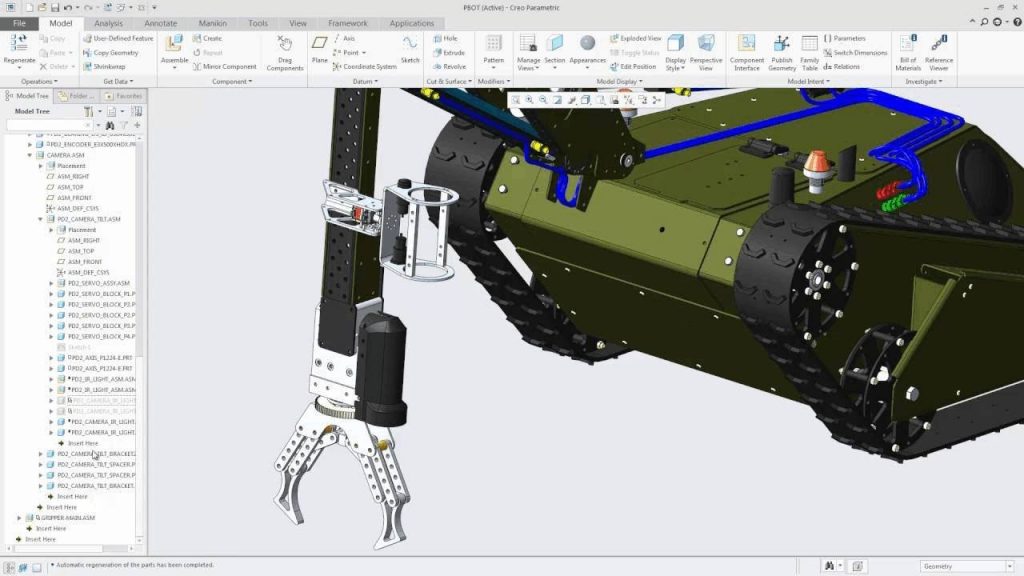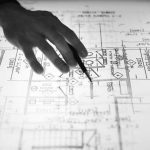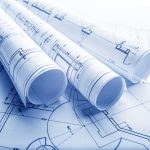A mechanical designer works with engineers, clients, and fabricators to produce design documents. In this article, you will learn job roles, design packages used, credentials, and potential employers of mechanical designers.
Job Role
A designer takes engineering calculations, datasheets, reference drawings, and project requirements to generate a 3D model and accompanying drawings. Designers hold chief responsibility for the accuracy of the model, as well as accompanying general arrangement, piping, structural, and any other drawings.
Design work runs concurrent to discipline engineering, and the start point is normally an approved set of P&IDs from the clients. 3D modeling is nearly ubiquitous, particularly in larger firms and on more complicated projects. Designers must have the ability to conceptualize and model in 3 dimensions and produce drawings accordingly. They are usually charged with reviewing and incorporating specifications. Designers must be aware of all regulatory requirements in addition to the client’s requirements for equipment access. These regulatory requirements include, but are not limited to: OSHA requirements, state and local building laws, and environmental regulations.
Designers work closely with engineers and drafters to produce finished drawings for the shop. Sometimes, the term “designer” and “drafter” is used interchangeably, but skillset requirements are different. Drafters apply drafting protocol to finished drawings whereas a mechanical designer must apply conceptual and commercial requirements.

If so charged, a designer must produce accurate drawings, dimensioned according to ISO and ANSI standards. Dimensions must have appropriate spacing, appearance, and tolerances. Most organizations provide a template for dimensioning practices, title blocks, and other drawing standards. Designers often produce general arrangement, pipe spool, structural skid, and control panel drawings.
Design Packages Used
Designers typically work in the context of one or two drafting packages. Usually, this means AutoCAD and a 3D modeling program. 3D Modeling programs vary. The most popular industrial programs include Creo, Cadworx, Revit, and SolidWorks. AutoCAD dominates the 2D drafting landscape and serves as the standard for industrial-grade work.
Designers may need to understand and perform Finite Element Analysis (FEA). FEA provides numerical analysis and subsequently stress analysis to a 3D model via subdivision of a large system into smaller, simpler parts. FEA functionality appears as an add-on option to 3D modeling programs. In most industrial applications, finite element analysis does not qualify as a proper substitution for calculations performed by a credentialed engineer.

Credentials
In contrast to engineering jobs, mechanical designer credentials focus more on work experience. Many mechanical designers previously worked as a welder, fitter, or machinery operator. The best designers draw from their industry expertise or quickly assimilate this knowledge from their peers.
Formal programs offered by community colleges provide software insight. Some community colleges offer a drafting certification program which may be leveraged for an entry-level drafting position.
Firms That Employ Mechanical Designers
Mechanical Designers see employ by three major types of firms: equipment builders, engineering houses, and operators.
Equipment builders use a mechanical designer’s expertise to create or integrate parts. Equipment ranges from small PC boards to gigantic offshore modules. Designers at engineering houses are responsible for the overall layout and design of a facility. They often integrate vendor models into a single package.
Operators employ mechanical designers in rare cases. These cases may involve specialized projects or when a designer possesses a highly differentiated skillset. Typically engineers, project managers, and administrative support comprise the core team of an operator. The generation of models and drawings is subcontracted to an engineering house that acts as the operator’s agent.
Mechanical designers at equipment builders typically see lower wages than designers at engineering houses. This reflects two key principles. Engineering houses generally hire and release designers more frequently as well as generally compensating all employees at a higher rate than equipment builders.
In 2020, the medium salary for a designer was $50,383, according to salary.com. Despite that, its not uncommon for a well-compensated or senior designer to make a 6 figure income. Mechanical designers tend to be classified as non-exempt, meaning they are eligible for overtime.



